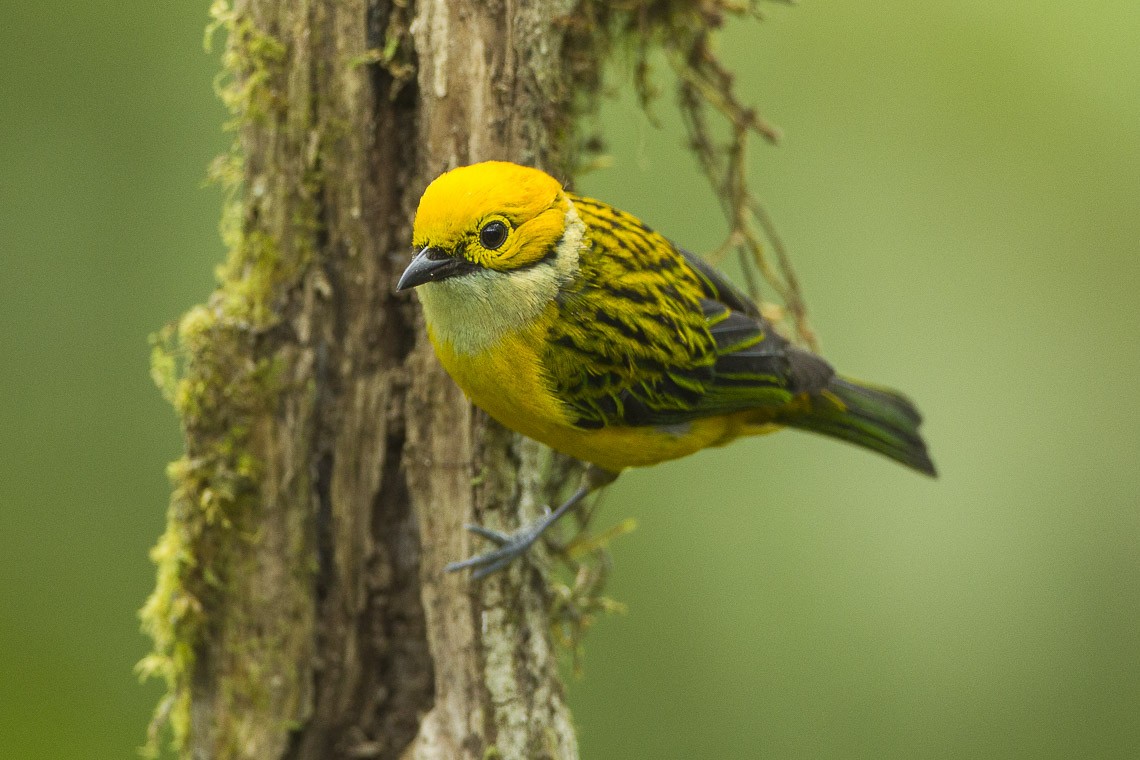Silver-throated Tanager
A species of Tangara Tanagers Scientific name : Tangara icterocephala Genus : Tangara Tanagers
Silver-throated Tanager, A species of Tangara Tanagers
Botanical name: Tangara icterocephala
Genus: Tangara Tanagers
Content
Description General Info
 Photo By Francesco Veronesi , used under CC-BY-SA-2.0 /Cropped and compressed from original
Photo By Francesco Veronesi , used under CC-BY-SA-2.0 /Cropped and compressed from original Description
The adult silver-throated tanager is 13 centimetres (5.1 in) long and weighs 21 grams (0.74 oz). The male is mainly yellow, with black streaks down its back, and a whitish throat bordered above with a black malar stripe. The wings and tail are black with pale green edgings. The sexes are similar, but adult females have duller and greener-tinged yellow plumage, and sometimes dark mottling on the crown. Immatures are much duller and greener, with dusky wings, tail, back streaks and malar stripe, a grey throat and darker green wing edging. The silver-throated tanager's call is a distinctive sharp buzzy zzeeep. It does not sing. 
Size
13 cm
Nest Placement
Tree
Feeding Habits
Silver-throated Tanager mainly feasts on fruit and arthropods, employing diverse foraging techniques. Unique dietary habits or adaptations are not specified. The summary aligns with verified sources for accuracy.
Habitat
The silver-throated Tanager typically inhabits mossy and montane evergreen forests, including tropical lowland regions, and can often be found at forest edges and in tall second growth forests. These birds prefer forested environments but are adaptable to disturbed habitats with remaining forested areas or trees. Geographically, they are distributed across broad Neotropical regions. They divide their habitat use between secondary and primary forests, with limited activity in semi-open areas. Remarkably, the silver-throated Tanager is capable of nesting and feeding in disturbed areas, as long as there are some remnant trees present.
Dite type
Frugivorous
General Info
Feeding Habits
Bird food type

Fruit
Behavior
Silver-throated tanagers occur in pairs, small groups, or as part of a mixed-species feeding flock. They eat small fruit, usually swallowed whole, insects and spiders. The compact cup nest is built 1–13 metres (3.3–42.7 ft) in a tree on a branch. The normal clutch is two brown-blotched off-white eggs. This species will raise two broods in a season. 
Distribution Area
In Costa Rica it is a common bird from 600 to 1,700 metres (2,000 to 5,600 ft) altitude in the lower and middle levels of wet mountain forests and adjacent semi-open areas like clearings with shade trees, second growth and woodland edges. In the heavy rains of the wet season, it will descend to sea level. In the South American part of its range it mainly occurs between 500 and 1,300 metres (1,600 and 4,300 ft), but can be found at altitudes of 150 to 2,100 metres (490 to 6,890 ft). 
Species Status
Not globally threatened.
Scientific Classification
Phylum
Chordates Class
Birds Order
Perching birds Family
Tanagers Genus
Tangara Tanagers Species
Silver-throated Tanager